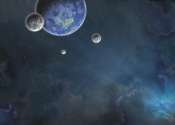Hubble probes extreme weather on ultra-hot Jupiters
In studying a unique class of ultra-hot exoplanets, NASA Hubble Space Telescope astronomers may be in the mood for dancing to the Calypso party song "Hot, Hot, Hot." That's because these bloated Jupiter-sized worlds are so ...









